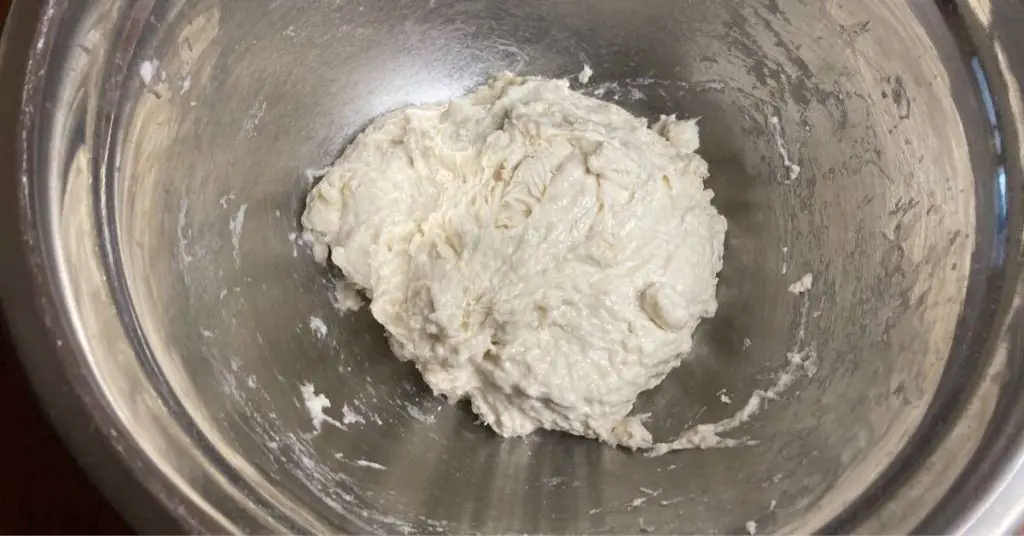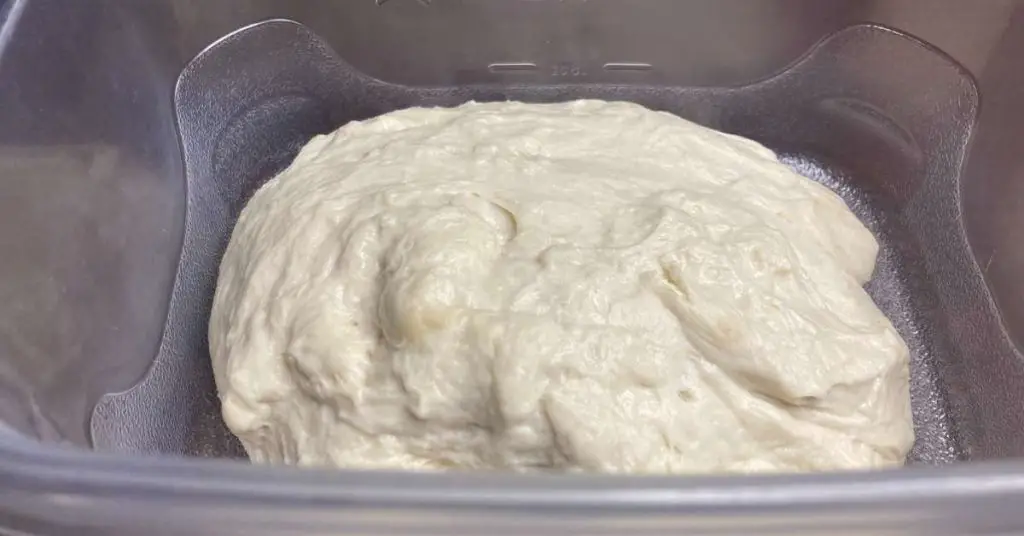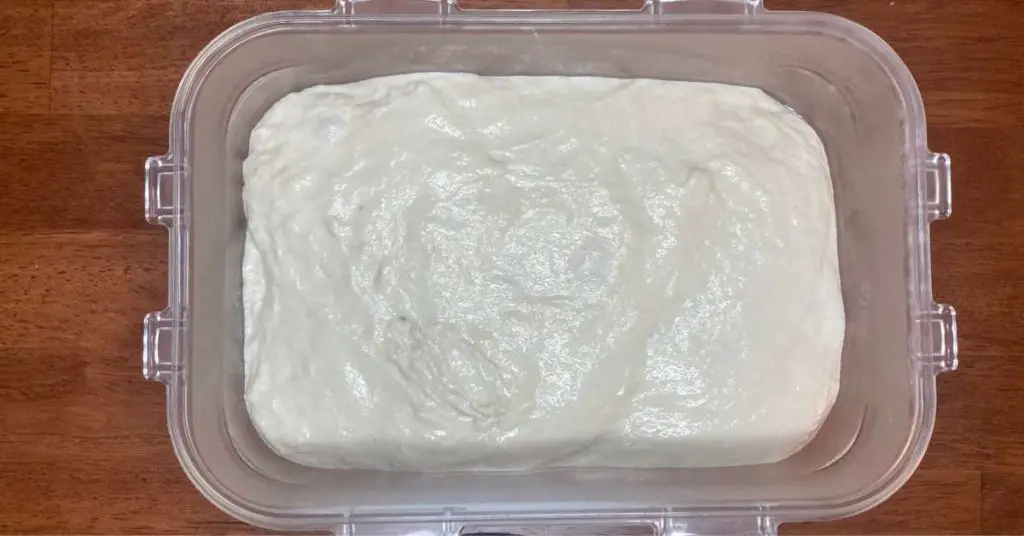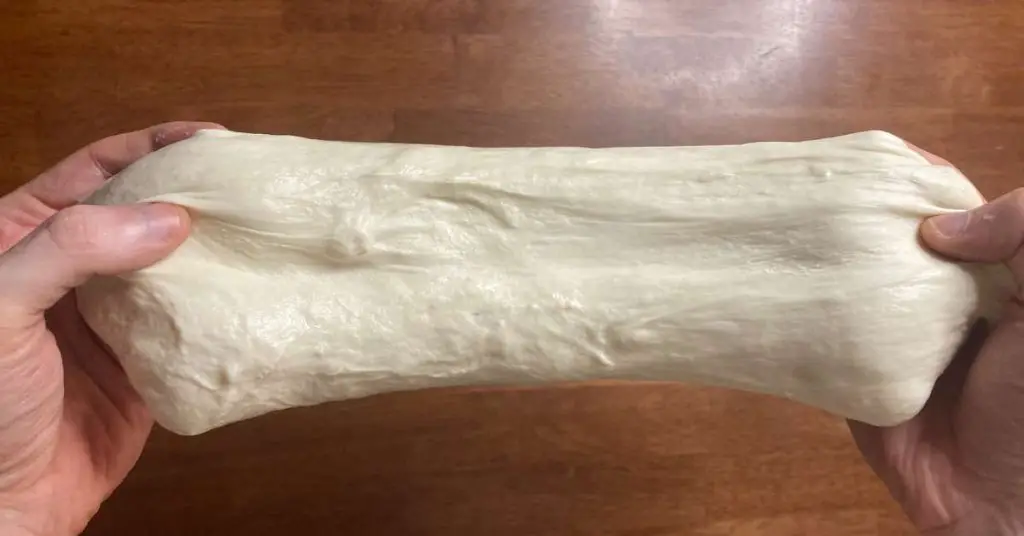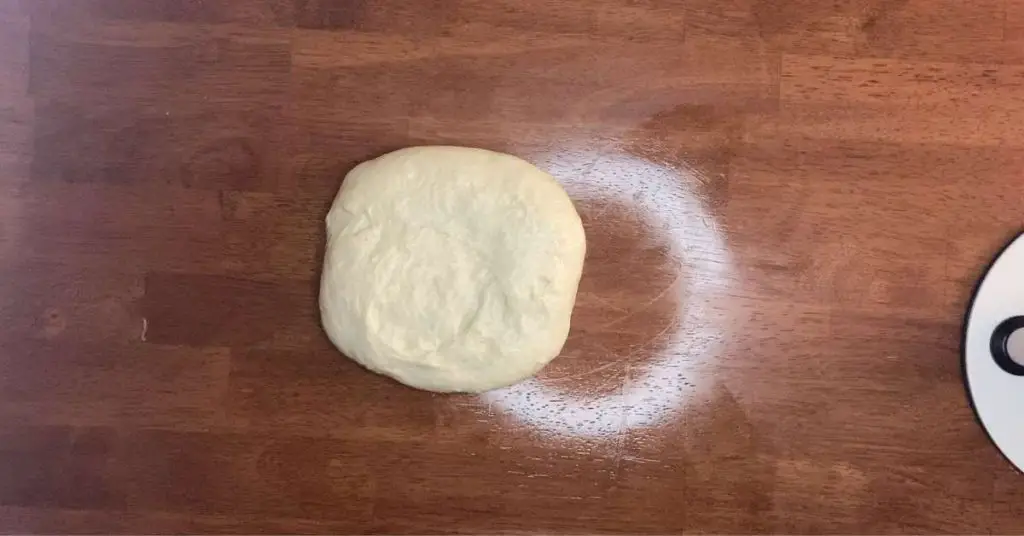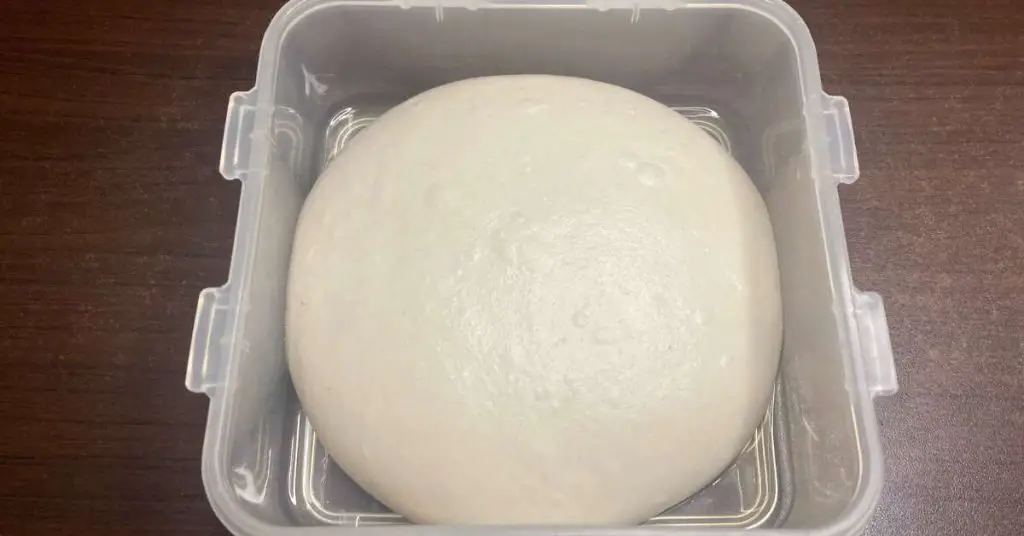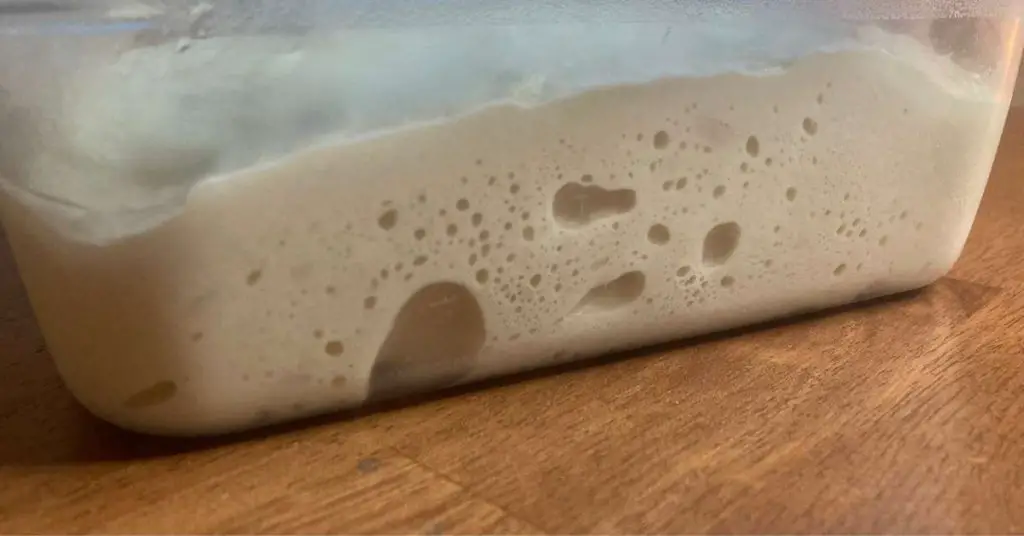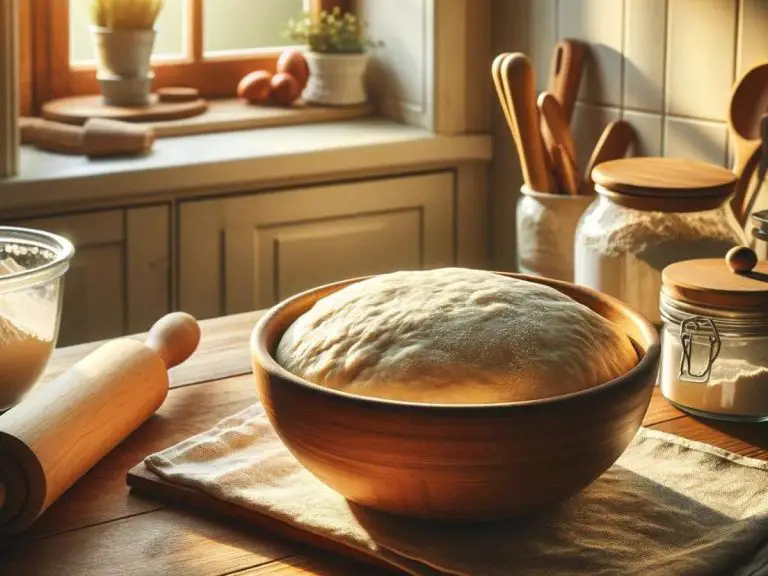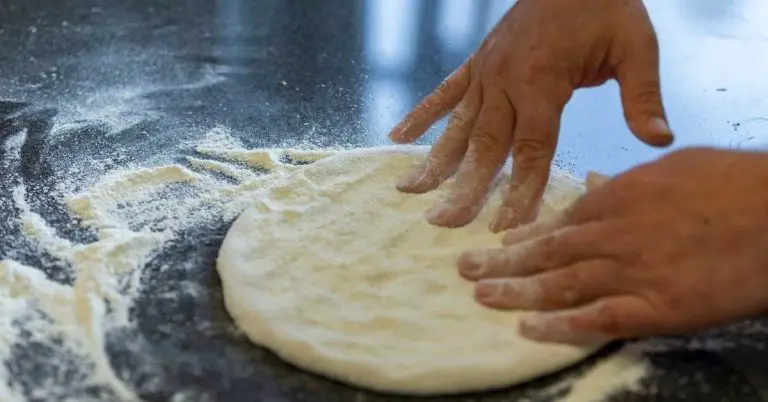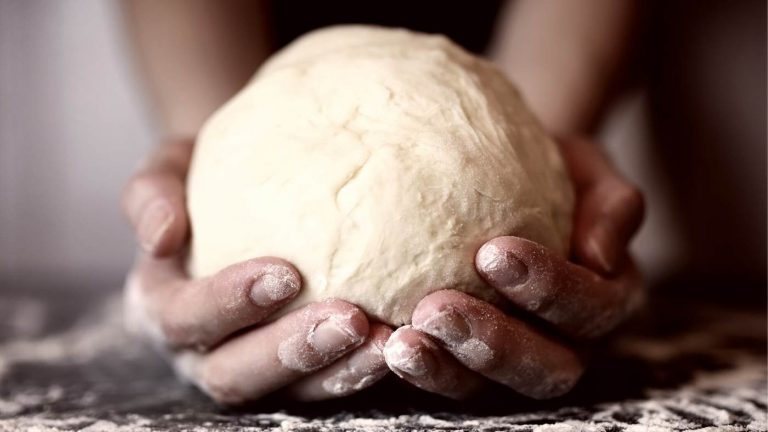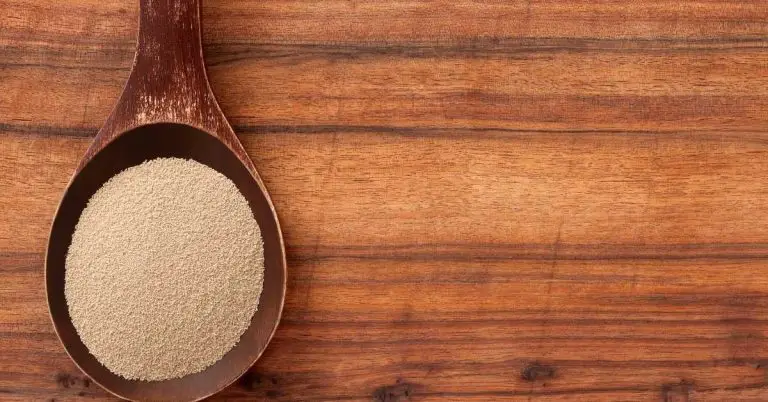What Should Pizza Dough Look Like? How To Tell When It’s Ready
A great pizza dough is the cornerstone of any good pizza, and it might seem simple enough to make looking at a recipe. Water, flour, yeast and salt. But once you start mixing the ingredients together, you might find yourself with more questions than answers, especially as you look at the mess of ingredients on your counter. What should pizza dough look like when it’s ready to use?
Pizza dough should look smooth and round after it’s been adequately kneaded due to the complex gluten structure that has been created. A properly prepared pizza dough should stretch when pulled and not tear. When the pizza dough is ready to be used, it’s skin will have a taught and shiny appearance and be slightly plump from the build up of gasses during the resting stage.
Take a look at the following image gallery to see what pizza dough should look like during every stage of the preparation process.
But pizza dough is not just a mix of ingredients, it’s a living and breathing thing full of actual organisms (yeast). So depending on how you’ve prepared your dough and the ratio of ingredients you’ve used, you will have some slight but important differences to watch out for.
Let’s go over what pizza dough should look like and how to know when it’s ready to be used based on several different ingredient and preparation methods. I promise when you’re done reading this article your pizza dough will always be perfect no matter what your skill or experience level is.
Bonus: Want the easiest solution? Just follow this easy homemade pizza crust recipe for the best results.
Related Post: Why Your Pizza Dough Is Too Hard
Pizza Dough Looks Kneaded Enough When It’s Smooth & Silky
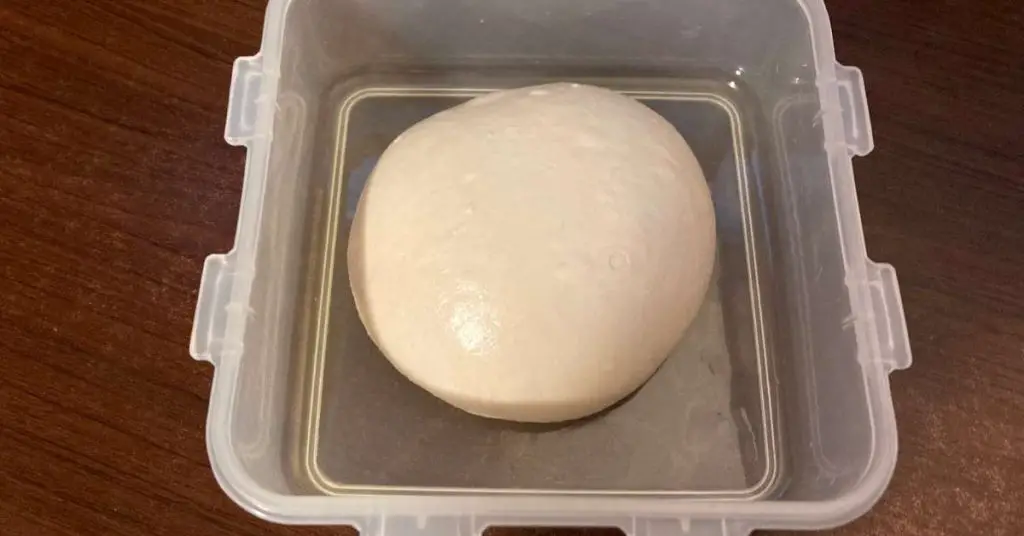
When you first mix your dough ingredients together it will look like a lumpy mess. This is because the gluten bonds that make pizza dough smooth and stretchy haven’t had a chance to form yet. The longer you knead, the more extensive the network of gluten bonds will become.
When your dough has been kneaded enough it will look smooth and silky and will hold its shape if you poke it with your finger.
Your pizza dough will also be slightly sticky depending on the level of hydration you’ve used. Keep in mind that the higher your hydration level, the longer it will take for the gluten bonds to form. So plan on some extra kneading time before it looks ready if you’re mixing a 70-80% hydration dough.
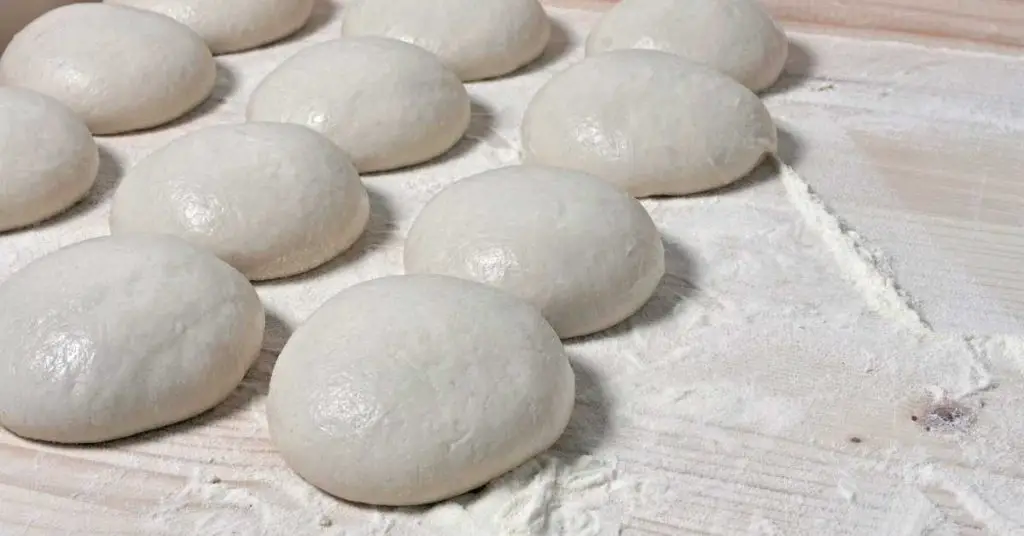
Pizza Dough Will Look Puffy & With Small Air Pockets When It’s Ready To Use
Contrary to popular belief, your dough is far from ready to be rolled or shaped into a pizza just as soon as it’s finished kneading. Yes, the kneading has created gluten bonds inside the dough but it hasn’t had enough time for the yeast to fully bloom yet.
This is because two things need to happen between when you mix your dough ingredients together and when you form it into a pizza. The gluten bonds need to form and the air pockets inside the dough need to fill up with gas.
Gas is created inside your dough when the yeast, which is a living fungus, has had enough time to feed on the flour and any sugars you’ve added. This happens when the dough has had enough time to rest after being kneaded and formed into a ball.
Your pizza dough will need at least 1-2 hours of rest after kneading before it looks ready to use. The dough will appear smooth and silky in texture and you will see visible air pockets forming on the surface.
But this is really the minimal amount of time if you’re in a hurry. I always recommend a much longer, 24+ hour cold ferment in a refrigerator after being kneaded and formed into balls.
Basically, the longer you leave your dough to rest the more air and gas there will be inside the dough, and the puffier it will look, when it’s ready to use. Incidentally, this is also a great way to avoid tough, chewy pizza crust when it’s finished baking.
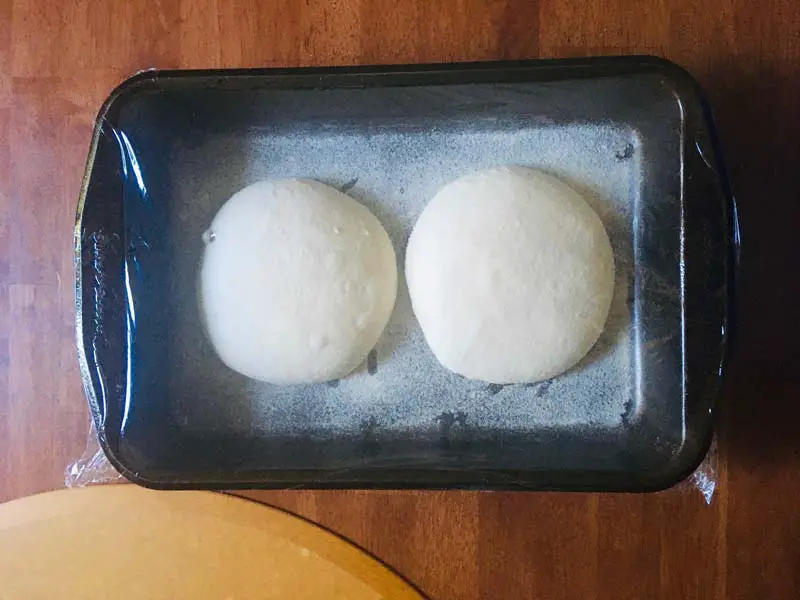
The Windowpane Test Can Help Determine If A Pizza Dough Is Ready
The windowpane method is an old strategy for seeing if you’re pizza dough has been kneaded enough
To see the windowpane affect in action, simply stretch your pizza dough while facing a light source after you think it’s finished kneading. If the dough is ready and has strong enough gluten bonds, it will form a translucent window pane affect with the light.
If it passes the windowpane test, you should be able to see a blurry representation of what’s going on behind the pizza dough where you’ve stretched it. You may have to stretch the dough quite a bit to achieve this affect. When this happens, your dough is ready to be used.
If unsuccessful, your pizza dough will simply rip when you stretch it. In this case, no worries. Just gather the dough back into a ball and keep kneading it until the windowpane affect works for you.
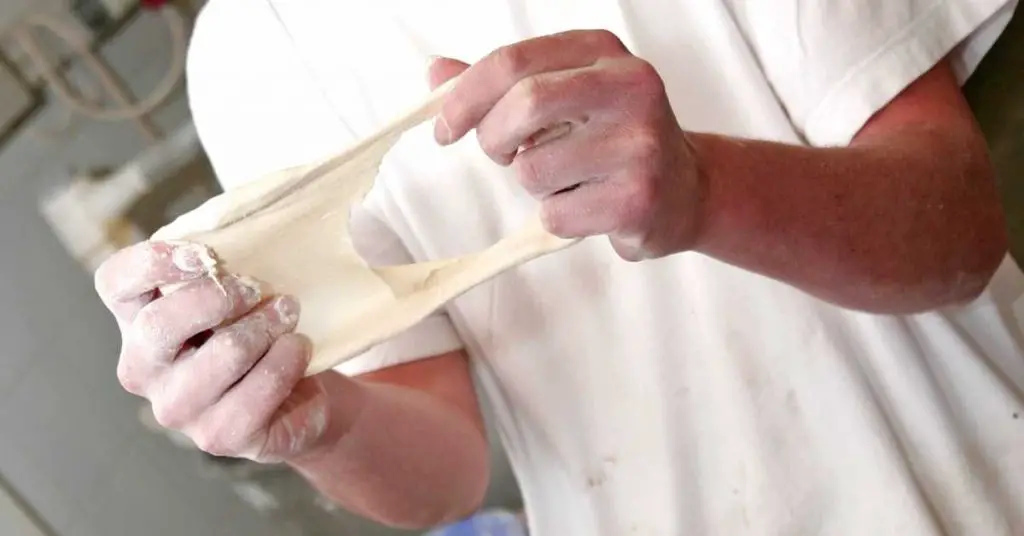
Should Pizza Dough Be Sticky?
How level of stickiness of your pizza dough is really a function of how long it’s been kneaded and how much moisture you’re incorporated into the ingredients.
A pizza dough that has been made with 50% moisture (as in 500ml of water for each 1000g of flour) likely won’t be very sticky at all when it’s finished kneading. However a pizza dough made with 65-80% moisture can become extremely sticky even after it has been extensively kneaded.
This highly hydrated kind of pizza dough requires special handling in order to avoid it sticking to your hands when shaping. I recommend wetting your hands with water or dusting them sparingly with semolina flour when prepping wet pizza dough into balls.
My own preferred pizza dough recipe calls for a 68% hydration level, which I feel is the best compromise between the softness of a wet pizza dough and the ease of handling of a dry one.
In general, the stickier your pizza dough the softer and more moist your pizza crust will be. This is why wet pizza dough is worth the inconvenience and mess of it sticking to your fingers a bit.
On the other hand, a pizza dough with far less hydration, like around 50%, won’t be sticky at all. This kind of pizza dough is better suited for extremely hot pizza ovens that bake faster and preserve more moisture.
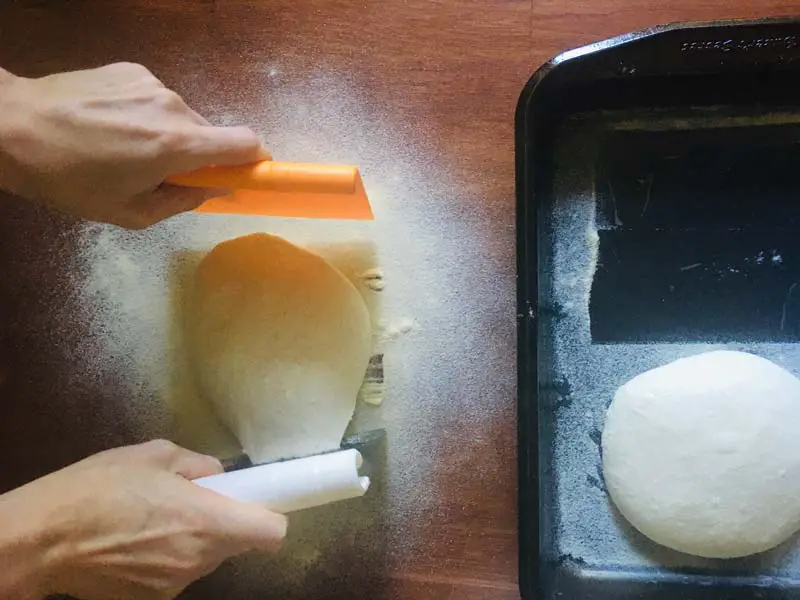
Should Pizza Dough Be Room Temperature Before Using?
If you’re like me and cold ferment your pizza dough in the fridge overnight, you might be wondering if it’s necessary to let it reach room temperature before using it.
You should always make sure your pizza dough is at room temperature before rolling it or shaping it into a pizza. Room temperature pizza dough will stretch easily and bake into a light and puffy crust.
When your pizza dough is cold the gluten network will be tense and difficult to stretch into a pizza. And when you put cold pizza dough in the oven you will often get sickly looking black spots on the crust (not to be confused with the beautiful char of a wood fired pizza).
This is why it’s so important to let your pizza dough rest at room temperature for at least 1-2 hours from the time you take it out of the fridge until you start using it. This allows enough time for the gluten to relax and for gasses to build up in the air pockets. A room temperature pizza dough will be much easier to stretch and shape.
Should Pizza Dough Be Kneaded Twice?
Pizza dough requires kneading in order to form the gluten network that will give the pizza crust its characteristic chewy texture. Some people will even knead their pizza dough twice to make sure enough gluten has formed.
But kneading the pizza dough twice isn’t strictly necessary. It’s more important to ensure that it’s been kneaded for enough time, either in one go or twice after a small rest.
Some people like to break their kneading time into 2-3 intervals. For example, kneading the pizza dough for 3 minutes, then waiting 10 minutes, then kneading again for 3 minutes, etc.
Kneading pizza dough twice isn’t completely needed, but it can make the job of kneading a lot easier. The time in between kneading sessions allows the gluten to slowly form more bonds, which means when you start kneading it again it will be less sticky and more elastic than it was before.
But believe it or not there are ways to avoid kneading the pizza dough altogether, and no I don’t mean using a dough mixing machine.
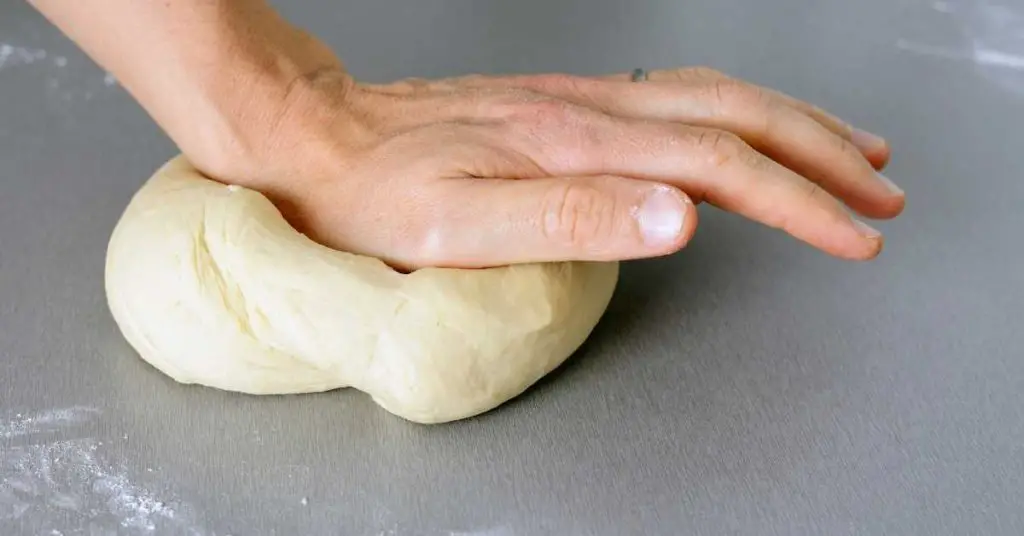
Pizza Dough Doesn’t Require Kneading To Form Gluten Bonds
Pizza dough needs gluten to stretch well and taste good, and kneading works for this, but it isn’t the only way to form gluten bonds in the dough.
Pizza dough does not need to be kneaded if you are following a no-knead pizza dough recipe. No-knead pizza dough is left to rest for 12-18 hours during which the network of gluten will form naturally. After resting for this period, the dough can be formed into balls without any kneading required.
For me, this is the preferred method for making pizza dough, assuming you can wait at least 24-36 hours before making the pizza.
I like to use my personal no-knead pizza dough recipe that’s tailored for a lower temperature home oven. This pizza dough is rested for 18 hours at room temperature without any kneading required. I then cold ferment the dough for up to 48 hours longer in the fridge.
Resting and cold fermenting the dough for this long means I get a fully formed gluten network along with lots of natural fermentation which makes the pizza crust fluffy and easy to digest. It also gives the dough a beautifully tangy flavor similar to sourdough bread. All of this without any kneading.
Kneading by hand works too, but it’s definitely not necessary for making a delicious pizza like some recipes will have you believe. Just let the pizza dough rest instead.
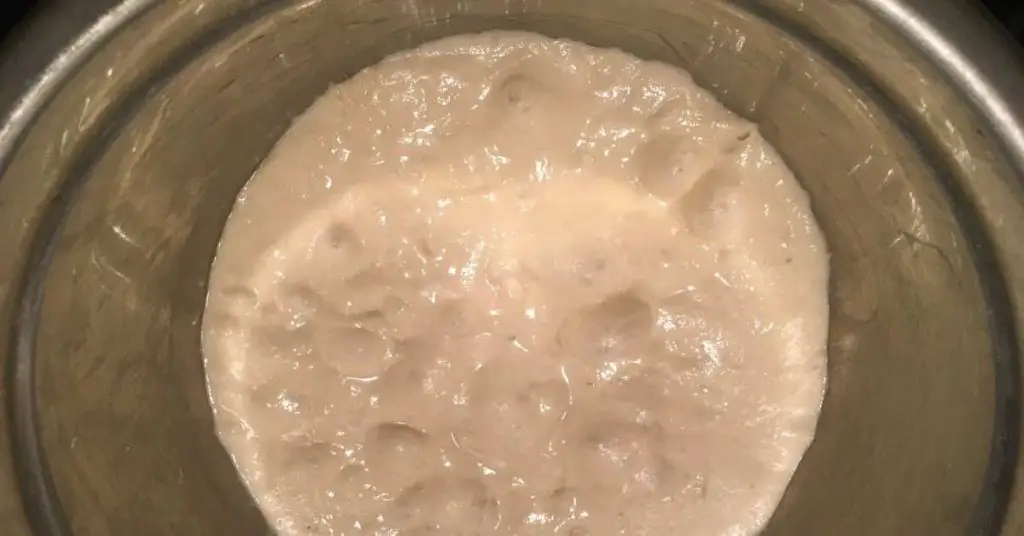
Pizza Dough Needs To Rise Before Using It
I know it’s tempting to start using your pizza dough as soon as you’ve finished kneading it. Everyone wants to eat a delicious homemade pizza as quickly as possible.
But if you want your pizza to be as flavorful and fluffy as possible, you really need to let the dough rise first. Letting the dough rise allows extra gluten bonds to be made and gas to be formed within its air pockets. A pizza dough that has been given time to rise will produce a softer pizza crust than one that hasn’t.
If You Don’t Let Pizza Dough Rise The Crust Will Be Dense And Flat
Pizza dough that hasn’t had enough time to rise won’t have any gas built up within it. It also won’t have a complex enough gluten structure to begin stretching.
If you don’t let your pizza dough rise, the crust will remain dense and flat after you bake it in the oven. Ideally you want your pizza crust to puff up with air during baking. This is what makes the crust soft and slightly chewy.
Don’t Let Your Pizza Dough Rise In The Fridge
I love to let my pizza dough rest in the fridge for extended periods to ferment. But that’s usually after preceded by several hours of rising at room temperature.
Letting your pizza dough rise in the fridge is often a matter of preference, but there are benefits to letting it rise at room temperature instead.
The chemical reactions that are happening in the pizza dough when it rests are not the same in the fridge as they are at room temperature. At colder temperatures, the rising will happen much more slowly and may take up to 24 hours. It may not rise much at all either unless you’ve added a lot of yeast.
Taste is also affected if you leave it to rise in the fridge for an extended period. The yeast in the dough produces different byproducts and gasses at colder temps than it does at warmer ones. All of this changes the flavor of the pizza crust after baking.
So while a pizza dough can be risen in the fridge and turn out ok, I don’t recommend it because it takes longer and doesn’t taste as good.
Pizza dough that has risen at warmer temps followed by a longer fermentation in the fridge will give you the best of both worlds in terms of texture and flavor.
So why not just let your pizza dough rise for at least 5-4 hours at room temperature instead of the fridge? Rising it in the fridge really has no benefits.
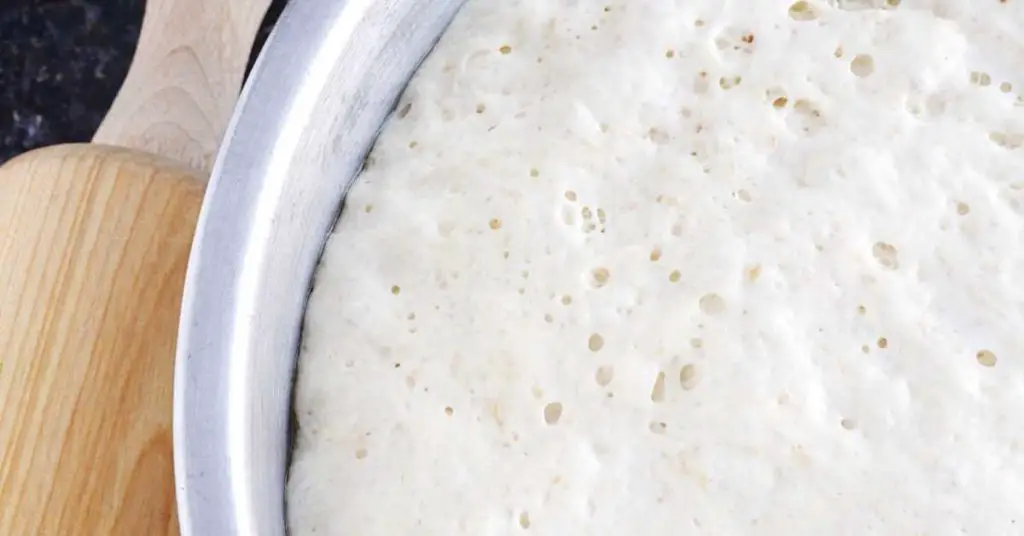
Give Pizza Dough Balls A Chance To Rise Again For Soft Pizza
Even though a second rising of the pizza dough isn’t necessary, once I’ve prepped the dough into balls I like to give them another chance to rest.
This resting time usually ranges from 1-2 hours depending on the temperature of the room. I do this because the act of the forming the dough balls knocks out much of the air and gas that had been forming during the rising period.
Letting the dough balls sit for another couple of hours lets that gas form again. And a gassier pizza dough will be much more fluffy and soft when it’s baked into a pizza crust.
If Your Over-Proof Your Pizza Dough It Will Deflate And Make Your Pizza Flat And Dense
Letting your pizza dough rise and ferment for an extended time is a great idea. But letting your dough proof as dough balls just before stretching is a bad idea.
When pizza dough balls over-proof, they form too much gas for the air pockets within the dough’s gluten structure to contain. When this happens the air bubbles burst and all of that precious gas escapes.
The extra proofing also weakens the gluten structure and causes the structure holding in the gasses to relax too much.
All of this means your pizza crust will bake flat and dense, the same as if you hadn’t let the dough rise or prove at all.
Too Much Flour Will Make Your Pizza Dough Stiff & Your Pizza Crust Hard
When you’re shaping a pizza dough, it’s tempting to continually add flour to make it easier to work with. But this will dry out the dough and change the ratio of wet to dry ingredients in the initial recipe.
This can become especially difficult when working with the kinds of sticky high hydration pizza doughs I recommend using.
But a pizza dough with too much flour will be difficult to stretch and will bake into a dense, hard crust.
Instead, if you’re finding the dough too wet and sticky to work with, just give it a small dusting of flour. You can also slightly wet your hands with water or olive oil to prevent sticking.
When I’m finally forming the dough into balls, I like to give one side of the dough a dusting in semolina flour. Semolina flour is thicker than regular flour and won’t suck as much moisture from the dough.
Using flour as a coating rather than incorporating it into the dough makes it easier to handle while also preserving as much hydration as possible to withstand the head of the oven without drying out and getting hard.
The Type Of Flour You Use Will Affect The Feel Of The Pizza Dough
All types of flour can produce delicious pizzas, but some will provide different results than others.
For example, Tipo 00 flour will produce a softer more delicate dough. Wheras all-purpose flour, using the same recipe and hydration level, will produce a slightly more tactile and rougher feeling dough.
This happens because the grains in these types of flour are refined at different levels. Tipo 00 is recommended for most pizzas because it is the most finely milled and produces the most delicate and soft pizza crusts.
All-purpose flour is milled at a slightly rougher level than Tipo 00 and so makes the crust slightly stronger. I find if I use all-purpose flour, my crust puffs out much more evenly and strongly than my Tipo 00 flours. But this puffy crust is harder and heavier than with Tipo 00 so there is a tradeoff.
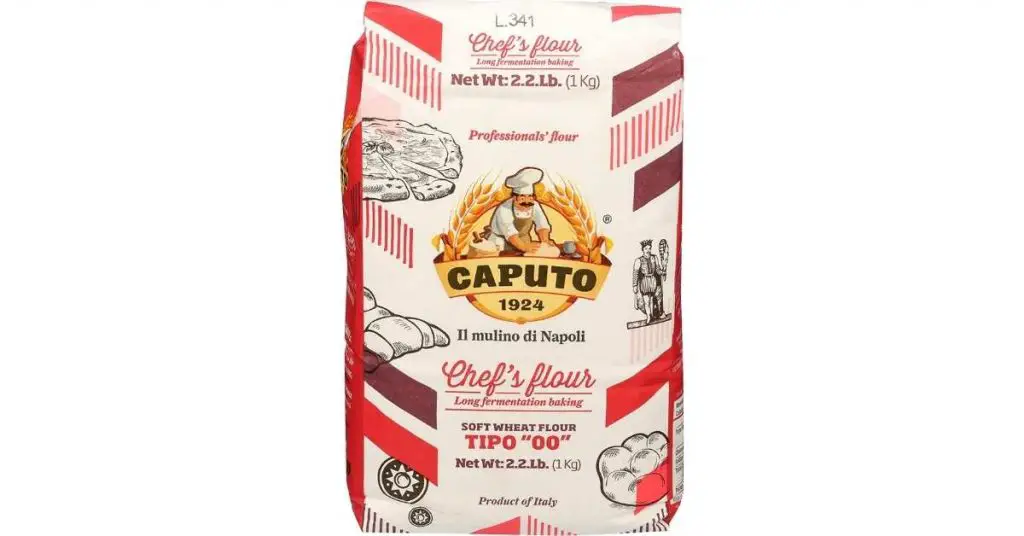
If You Want Your Pizza Dough To Be Stretchy, Make Sure You Knead It Enough
As we’ve discussed, kneading the pizza dough helps gluten bonds to form within the dough. And when the pizza dough has reached a high enough gluten content, it will be easier to stretch.
So make sure you’re kneading your pizza dough enough if you want it to be stretchy. Alternatively, you can use a no-knead method that takes 12-18 hours to complete.
Using a no-kneading method, the gluten bonds form within the dough naturally as it rests. This way the pizza dough turns from a brittle lump of ingredients into a stretchy pizza dough without any kneading required.
Total Yeast Amount Will Affect What It Looks Like When It’s Ready
Depending on how much yeast you use in your dough, it will look different when it’s ready to use.
If you use a lot of yeast, your dough is going to rise very quickly at room temperature. It may even more than double if you’ve use too much yeast for the size if your dough.
Ideally, you should be using as little yeast as possible to avoid a yeasty taste. If you’re planning on fermenting your pizza dough for more than 24 hours, you won’t need to use very much yeast at all. During extended ferments the yeast is able to multiple naturally without affecting the flavor of the crust.
Alternatively, if you need to use your pizza dough right away, you can go ahead and use extra yeast. In this case the yeast won’t have enough time to overgrow and taste like a bad beer.
But if you can at all afford to, I recommend a longer rise at room temperature followed by an extended cold ferment of at least 24 hours. This gives you the best of both worlds in terms of maximizing digestibility and minimizing unwanted yeasty flavors.
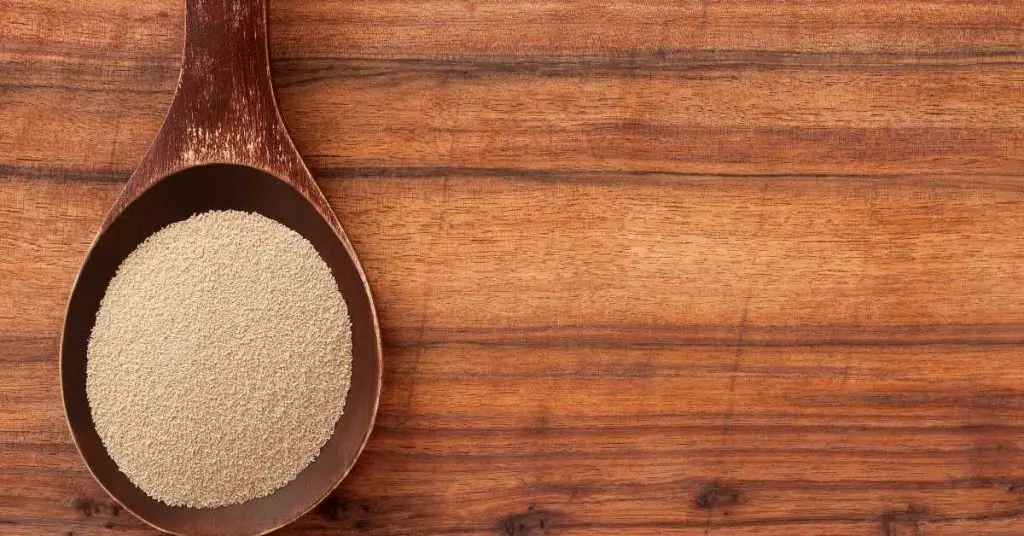
How To Make Perfect Looking Pizza Dough
If you want to cut to the chase and just get right to making perfect pizza dough, skip the trial and error and follow my recipe.
This recipe has been tailored for the home oven and gives you the best of all worlds – lot’s of hydration and extended warm rises and long cold ferments.
Final Thoughts
No matter which methods you use to make pizza, your dough is going to look supple and silky when its ready to use.
It might be a bit sticky or a bit dry to work with, but you pizza dough can still make a tasty pizza as long as you prepare and bake it accordingly.
Ultimately, if you want to know what your pizza dough looks like when it’s ready, just follow all of these tips and avoid the guesswork. Use a good recipe, knead it enough and give it time to rise and you won’t have to wonder if it’s ready.
I hope that answers any questions you might have. You should now know exactly when your pizza dough is ready.

